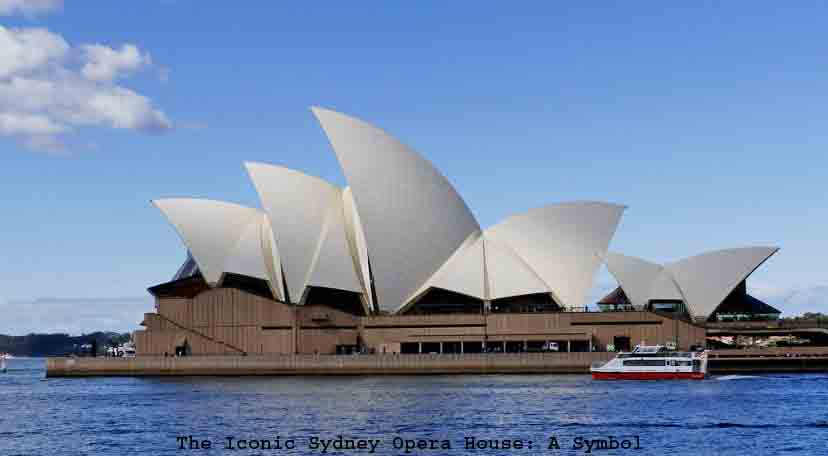
The Opera House In Sydney stands as an architectural marvel on the shores of Sydney Harbour, capturing the hearts and imaginations of millions around the world. Renowned for its distinctive sail-like structures and breathtaking location,
the Opera House is not just a performing arts venue but a symbol of Australia’s cultural identity and innovation in design. In this comprehensive exploration, we delve into the history, architecture, cultural significance, and the enduring legacy of the Sydney Opera House.
Historical Evolution:
Birth of an Idea:
The genesis of the Sydney Opera House dates back to the mid-20th century when there was a growing recognition of the need for a dedicated performing arts venue in Sydney. In 1954, the New South Wales government announced an international design competition, inviting architects from around the globe to submit their proposals for an opera house that would grace the city’s skyline.
Architectural Ambitions:
The winning design came from the Danish architect Jørn Utzon, whose vision was both audacious and revolutionary. His design comprised a series of shell-like structures, resembling sails billowing in the wind. Utzon’s innovative approach not only pushed the boundaries of architectural norms but also presented a structure that would come to define Sydney’s identity.
Construction Challenges:
Construction on the Sydney Opera House began in 1959, but the project was fraught with challenges. The complexity of Utzon’s design, coupled with engineering and budgetary constraints, led to numerous setbacks. Despite these challenges, the construction persisted, and the Opera House was finally completed in 1973, becoming a testament to human perseverance and ingenuity.
Architectural Splendor:
Design Elements:
The Sydney Opera House’s architectural brilliance lies in its innovative design and meticulous attention to detail. The iconic shells that make up the structure are a masterpiece of engineering, combining form and function seamlessly. Utzon’s use of concrete and ceramic tiles not only created a visually striking facade but also contributed to the building’s acoustical excellence.
Interior Grandeur:
Beyond its striking exterior, the Opera House In Sydney boasts interiors that are equally captivating. The Concert Hall, Opera Theatre, Drama Theatre, and Playhouse are key venues within the complex, each designed to cater to specific performing arts genres. The interiors reflect a harmonious blend of aesthetics and functionality, enhancing the overall experience for both performers and audiences.
Cultural Symbolism:
The Opera House In Sydney is more than just a performing arts venue; it is a cultural icon that symbolizes Australia’s artistic prowess and multicultural identity. The inclusion of indigenous design elements, such as the Bennelong Point’s shell motif, pays homage to the country’s rich Aboriginal heritage, creating a building that resonates with both local and global audiences.
Cultural Significance:
Global Landmark:
The Sydney Opera House has transcended its role as a mere cultural venue to become a global symbol of modern architecture and design. Its inclusion in the UNESCO World Heritage List in 2007 further solidified its status as a site of outstanding universal value, placing it in the esteemed company of other iconic landmarks around the world.
Multifaceted Venue:
The Opera House hosts a diverse range of cultural events, from classical concerts and opera performances to contemporary music, theater, and dance productions. Its versatility in accommodating various artistic expressions makes it a hub for creativity and a vital contributor to Sydney’s vibrant cultural scene.
Economic Impact:
In addition to its cultural contributions, the Sydney Opera House plays a significant role in the economic landscape of Sydney and Australia at large. The influx of tourists and revenue generated from events hosted at the venue contribute substantially to the local economy, reinforcing the symbiotic relationship between culture and commerce.
Behind the Curtains: Operations and Management
Maintenance Challenges:
Preserving the integrity of the Sydney Opera House requires meticulous maintenance efforts due to its exposure to harsh coastal elements. Ongoing restoration and conservation projects are essential to ensure that this architectural gem continues to shine for future generations.
Operational Logistics:
Managing a venue of such magnitude involves intricate logistical planning. From coordinating performances and events to handling ticket sales and ensuring visitor satisfaction, the operational aspects of the Sydney Opera House are as complex as its architectural design.
The Legacy of Utzon and Ongoing Evolution:
Utzon’s Legacy:
Jørn Utzon’s vision and legacy live on in the Sydney Opera House, despite the challenges and controversies that marked his association with the project. His innovative design principles and commitment to pushing the boundaries of architecture continue to inspire architects and artists worldwide.
Opera House In Sydney Evolution and Adaptation:
The iconic Sydney Opera House is a testament to evolution and adaptation in the world of architecture and performing arts. From its initial design struggles to its current status as a global symbol of modernist architecture,
the opera house’s journey reflects the resilience and innovation required for long-term success. The building’s innovative sail-like design has not only become an integral part of Sydney’s skyline but also a globally recognized cultural landmark.
Furthermore, the opera house’s ability to adapt to changing times has been crucial to its continued relevance. It now hosts a diverse range of artistic performances and events, catering to modern audiences while preserving its rich legacy.
The ability of this architectural marvel to evolve with society’s ever-changing tastes underscores the importance of flexibility and foresight in maintaining cultural relevance. As it continues to stand as a beacon of innovation and adaptability, the Opera House In Sydney serves as an inspiring example for future architectural endeavors worldwide.
Conclusion:
The Sydney Opera House stands as a testament to human creativity, resilience, and the power of architecture to shape cultural identities. From its humble beginnings as an international design competition to its current status as a global icon, the Opera House continues to enchant and inspire.
As a symbol of Australia’s cultural richness and a hub for artistic expression, the Sydney Opera House remains a shining beacon on the shores of Sydney Harbour, inviting the world to partake in the magic of the performing arts.










Thank you for your sharing. I am worried that I lack creative ideas. It is your article that makes me full of hope. Thank you. But, I have a question, can you help me?